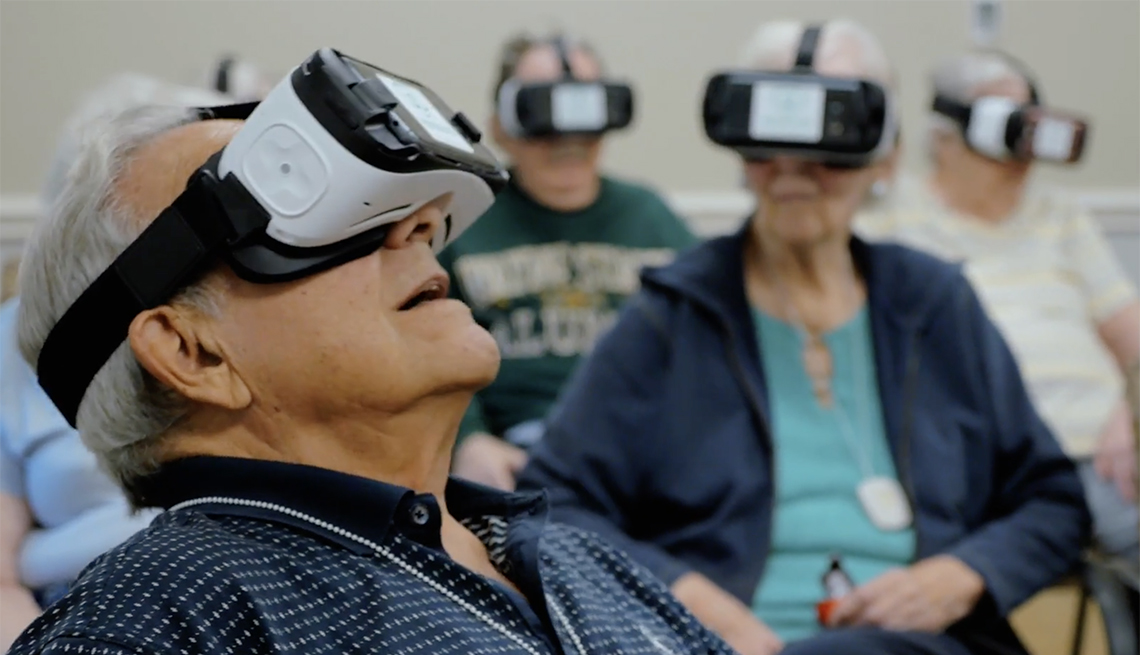
How virtual reality is transforming caregiving for seniors
- Select a language for the TTS:
- UK English Female
- UK English Male
- US English Female
- US English Male
- Australian Female
- Australian Male
- Language selected: (auto detect) - EN
Play all audios:

When Ann Ellen Rutherford put on the headset, she suddenly found herself in Paris. The 75-year-old, a resident at Maplewood Senior Living in Weston, Mass., stepped into the Louvre museum,
which she had visited years ago. As she turned her head, she took in the scenery and the priceless art surrounding her. “It hadn’t changed,” Rutherford said. After a few minutes of
exploration, she asked the activity director at her adult community if she could travel to Italy to revisit Venice, one of her favorite cities. With a few clicks on a computer pad, she had
arrived. And while this trip didn’t involve a passport, it still felt like a journey, she said. “Sometimes I get frustrated that I can’t travel. But I’m happy I can go back and see beautiful
things.” Rutherford was experiencing virtual reality (VR), an interactive, three-dimensional immersive computer experience that's typically viewed through goggles. The technology,
which first found popularity with video-gaming millennials, is now wowing older Americans, health care professionals and caregivers. Increasingly, adult communities are using VR for
enrichment and to help trigger positive memories for patients with dementia, who can use programs like Google Street View to revisit their childhood neighborhoods. It’s also aiding patients
with macular degeneration and helping train medical professionals, letting them step into their patient’s shoes to experience how diseases alter how they perceive the world. Perhaps most
importantly, it can help reduce social isolation and depression, said Kyle Rand, CEO of Rendever, the company that provided the VR experience used at Rutherford’s senior living community. He
said that VR can be transformational. “You can put it on the person you’re caring for, and you can let them do anything and go anywhere. All of a sudden, life is much more than the four
walls around you.” You forget you have a headset on. You feel like you’re really there. — Arleen Mikulski, 80 So far, the technology has been marketed to adult communities and agencies. In
Ontario, Canada, the Milton Public Library has even partnered with local senior homes to offer the service. Rendever and other VR companies said they are working to find ways to make VR
affordable for consumers by next year. Meanwhile, it’s possible to try the technology on your own, simply by searching YouTube for “360 VR” and viewing videos through a low-cost headset that
works with a cellphone. Of course, the content quality can vary greatly. And like many technologies, it can be glitchy and frustrating to patients and caregivers who are trying it out for
the first time. But the upside is tremendous, said Molly Fogel, director of educational and social services for the Alzheimer’s Foundation of America. It’s particularly valuable for
reminiscence therapy, which uses recollections to increase psychological well-being. “It can bring joy, helping a person engage in the memories they can still access.”
